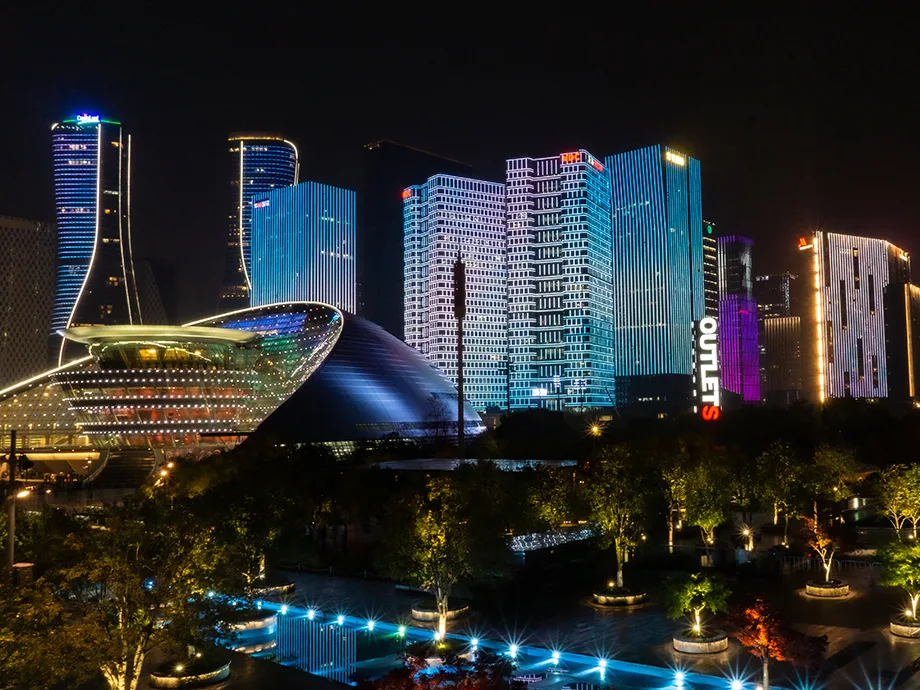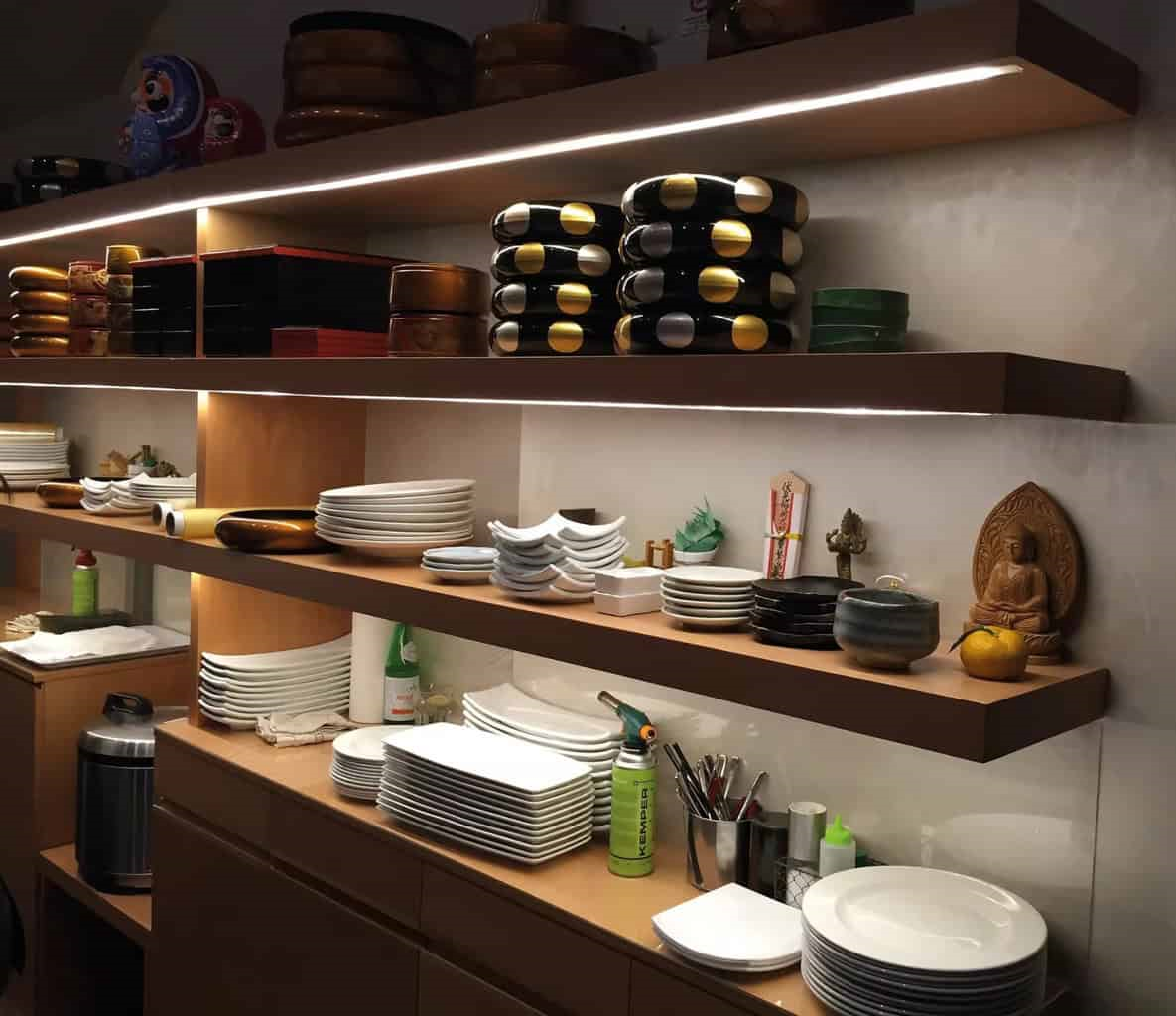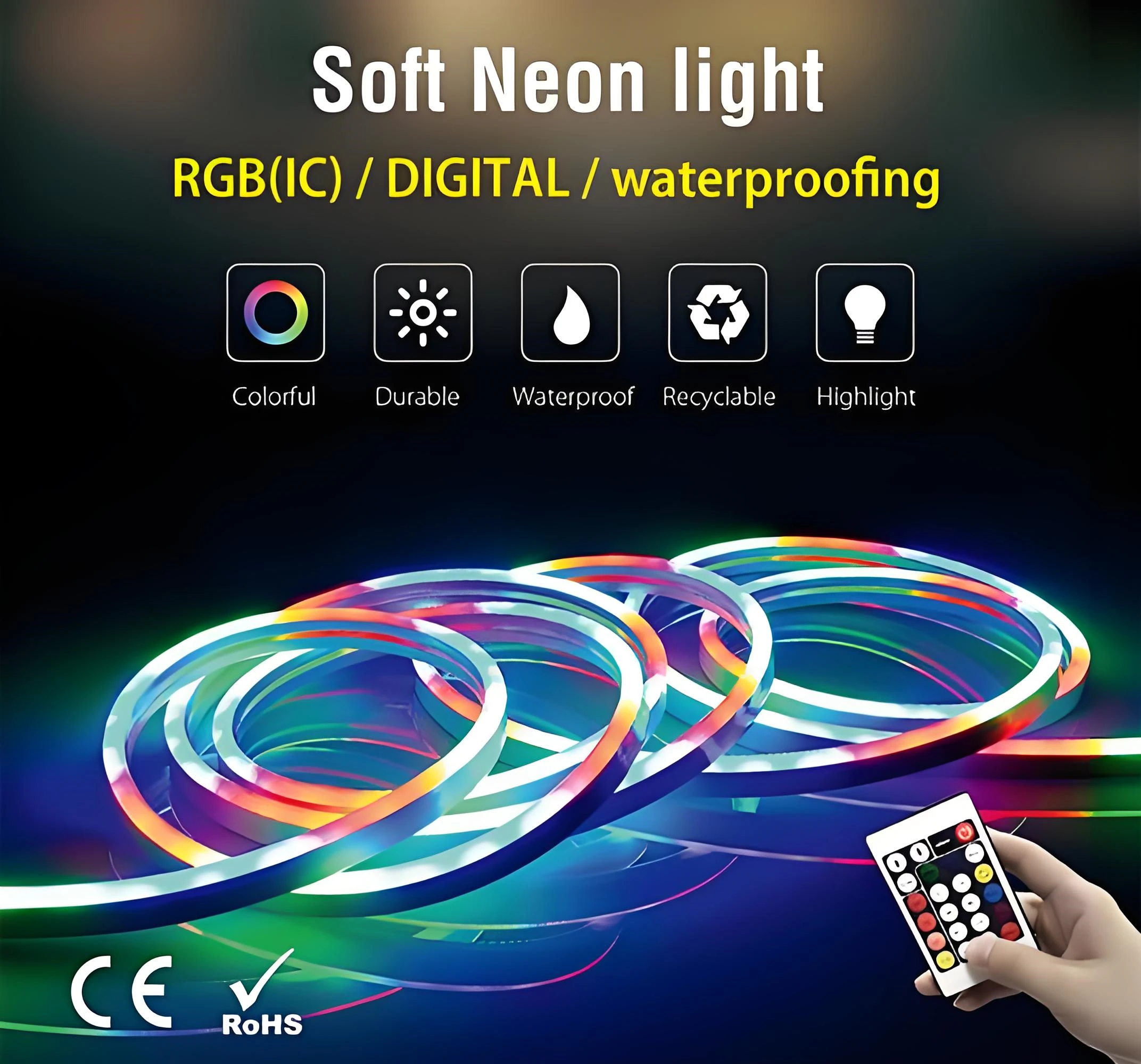Why Is Lighting Essential for Van Conversions?
More people are embracing the nomadic lifestyle, traveling in campers, RVs, vans, or converted buses. While living in a small camper may seem difficult to some, others spend years transforming old vehicles into cozy homes or road trip getaways. A camper van may be small, but with the right design, it can feel spacious inside.
One of the most important steps when converting a van is installing good interior lighting. Most vans have few windows, which means natural light is limited, creating a dark, box-like atmosphere. Proper lighting is essential for both comfort and practicality in small spaces like campers, vans, or tiny homes.
This post highlights the importance of lighting design and offers great lighting solutions, with examples from industry professionals.
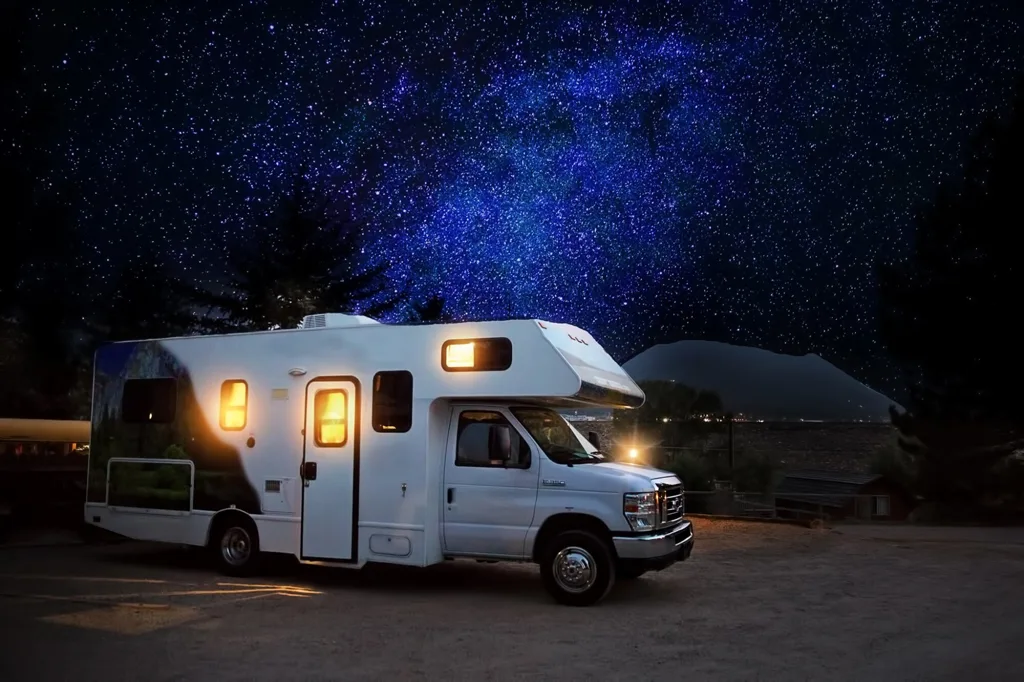
What factors should you consider for choosing motorhome lighting?
The right combination of lights in your camper will make for a practical and comfortable home on wheels. When choosing lights for your van or bus, the main things to consider are purpose, efficiency, power supply, brightness, color temperature, and installation.
1. Purpose
Consider the uses for different areas in your van and the light you will need for each. Our customer Contravans are professionals at their craft which just happens to be Camper Van design. All images are from their website, please check them out.
-Task Lighting
Task lighting creates increased light in an area for a specific task. In a camper van, the area you will need task lighting the most is the kitchen. We don’t want any emergency visits while on the road, so let us ensure the chef can see when they are slicing and dicing!
-General Purpose Lighting
Van interior lights are nice to have for the main light source in a van. These will give a general illumination to your area like any household ceiling light would.
-Ambient Lighting
Some might like a dimmer, mood-setting light for the sleeping and lounge areas.
-Exterior Lighting
Many campers like to spend time outside the van. In this case, exterior lighting might be needed for the nighttime festivities.
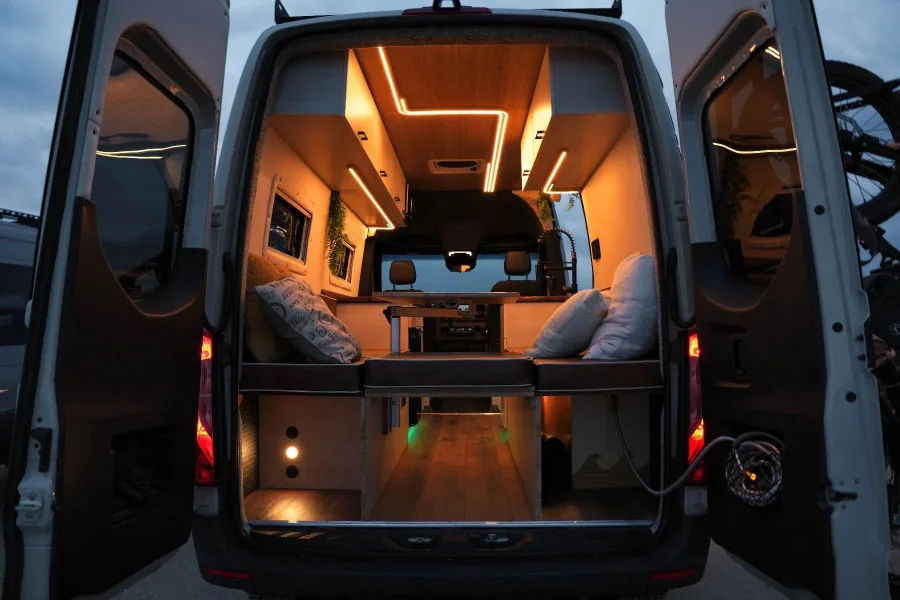
2. Efficiency
Anyone living off-grid, whether in a house or a camper, knows how precious the electrical supply is. Even if you use a solar-powered electrical system, the battery only stores and provides a finite amount of power, so opting for the most efficient solutions is always important.
LED lights are extremely efficient and can be operated at high levels without much electricity. We only recommend using LED lighting within your camper van.
3. Power Supply
Whichever LED lights you decide upon for your camper will need a power supply. Most van conversions use a separate “leisure or “house” battery for refrigeration, fans, and electronics. Lighting would fall into the leisure category, and LED lighting would hardly dent your power supply or battery.
There are still LED lighting options for those using a more simple system. Campervans without a split-power relay typically use rechargeable batteries or stand-alone battery powered LED lights.
4. Brightness
Brightness is measured in lumens. The higher the lumen number, the brighter the light. For the sake of camper van lighting, we will simplify the subject into these simple guidelines.
Bedrooms & Living Spaces = 300-500 lumens / sq meter
Kitchen & “Tasky” Areas = 500-800 lumens / sq meter.
In a tiny space like a camper van where almost every area is multi-purpose, dimmers are the best option so that the same light can be dimmed or brightened according to your job.
5. Color Temperature
The color temperature always needs to come up when talking about LED lighting. White light color is a spectrum, the same idea as the color spectrum. White light is measured in Kelvin (K), where the higher temperatures 5000-6500K are known as cool white (think blue-ish), and the lower temperatures 2500-3500K are more of a warmer white (yellow-ish). For those that can’t decide, luckily, neutral white comes in at around 4000K.
Cool White light appears brighter to the eye and is generally preferred for working environments. Warmer white light simulates the yellowish glow of the sunset and appears dimmer, giving off a more dull light with less contrast.
How to Choose the Right 12V LED Lights for Your Motorhome?
As well as recommending that the lighting in the motorhome is LED, there are other things to consider. As we mentioned earlier, because your battery works on 12 volts, it is best to choose 12-volt LED lights for your motorhome. This way, you can connect the camper LED lights in one go, without the need for a transformer. It is also wise to look at the consumption of the lighting you want to use. Consumption is the amount of energy it takes for a bulb to burn and is measured in watts. The lower the wattage, the more economical the bulb and the longer your battery will last. Recessed lights are available from just 3 watts per light.
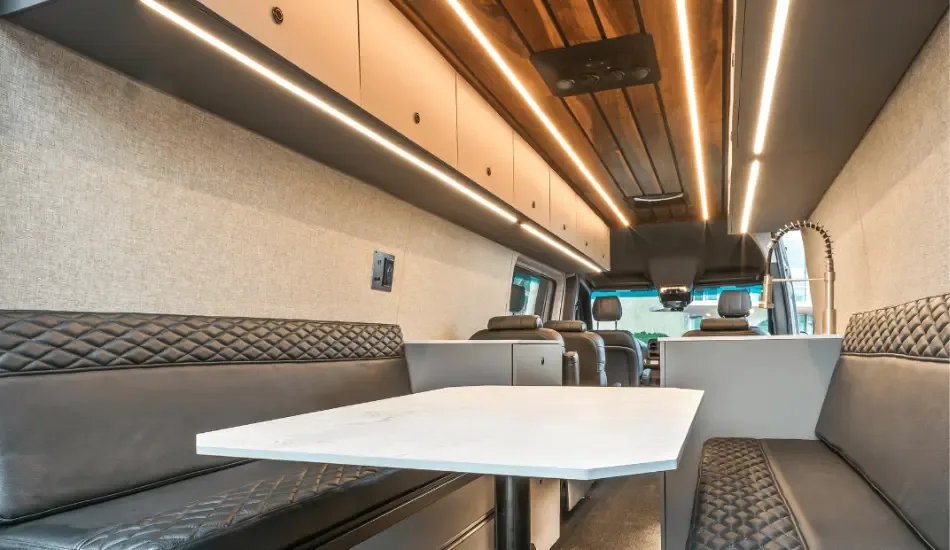
1. Recessed spotlights
If you want to use recessed spotlights in your motorhome, you can choose between recessed spotlights with a built-in light source or spotlights with a replaceable light source. With recessed spots, it is particularly important to consider how thick the ceiling is where you want to install the spots. A recessed spotlight with a built-in light source is often flatter than one that can accommodate a replaceable light source, often a GU10. The disadvantage of spots with a built-in light source is that you can’t replace the light source if the bulb breaks. Fortunately, LED lighting lasts incredibly long, and many of the recessed spotlights on our website have a life of at least 25,000 hours. That sounds like a lot, but it is. If the bulb is on for 10 hours a day, 250 days a year, it will last at least 10 years. Now, this is a bit of an exaggeration for a camper and in practice you will not have the lights on for 10 hours a day. So the bulbs will last even longer.
2. Separate lamps
Do you already have camper lighting inside and just want to replace the caravan lighting with long-lasting LED lighting? Changing a camper or caravan light is really a breeze. Then we have good news for you! You will save a lot of money anyway and you will be surprised how much longer your battery will last. You can easily save 70% energy if you still use old-fashioned lighting in your motorhome. Of course, there is a wide choice of E14 and E27 bulbs, as well as GU10 bulbs. However, it is more likely that you will be using smaller bulbs in your motorhome. An R7S bulb, for example, is very common above a mirror. This is a small bar light. You can buy these from as little as €5.95. Other common options are G4 or G9 bulbs.
These are even smaller and come in small light fittings. These are available from as little as €2.95. So you can replace your old lighting, but you can also hang a nice hanging lamp over the dining table and screw in an LED bulb. There are lots of lovely incandescent lamps where you can see the filaments running, just like in old-fashioned light bulbs. These add a lot of atmosphere to the room anyway.
When it comes to LED lighting in the camper, we also have a wide range of individual lamps. For example, do you already have a wall light on the outside of your motorhome? Screw in an energy-efficient LED bulb and start saving.
3. LED Strips
Another handy lighting option for your motorhome is an LED strip. This is a flexible strip of small LED lights that you can hang wherever you like. LED strips come in all shapes and sizes, so there is always one to suit your needs. LED strips come in 2, 5, 10, 20 and 50 metre lengths, but you can always shorten or lengthen an LED strip. For example, the shortest LED strip you can make is 12.5 centimetres. You can also choose from different light colours. From warm white 2700K to daylight white 6000K (FYT10T608C from Signlite LED), or go for an RGBWW version ( FYH12T784C from Signlite LED). With RGBWW, you have an intelligent strip that you can control with your mobile phone.
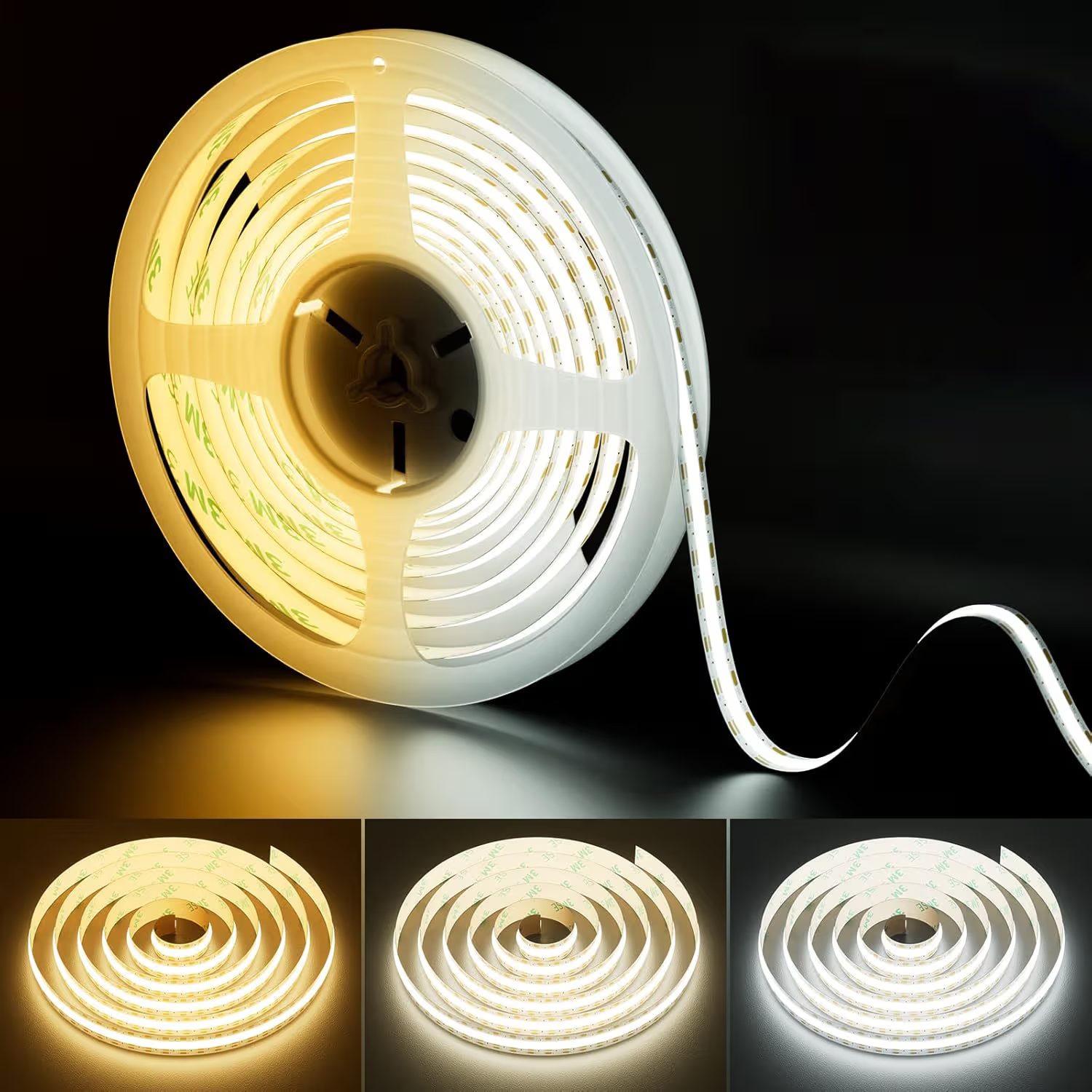
Dual Color Tunable White COB LED Strip Light
Main Model: FYT10T608C
LED Chip QTY per Meter: 608/640
CRI: >90
PCB Width: 10mm
Color Temperature: 2700K – 6500K changeable
Input Voltage: DC12V/DC24V
Power per Meter: 14W/16W
Cuttable Length: 26.31mm/50mm
IP Grade: IP20/IP54/IP65/IP67/IP68
Warranty: 3 years
Price: USD $1.65/meter
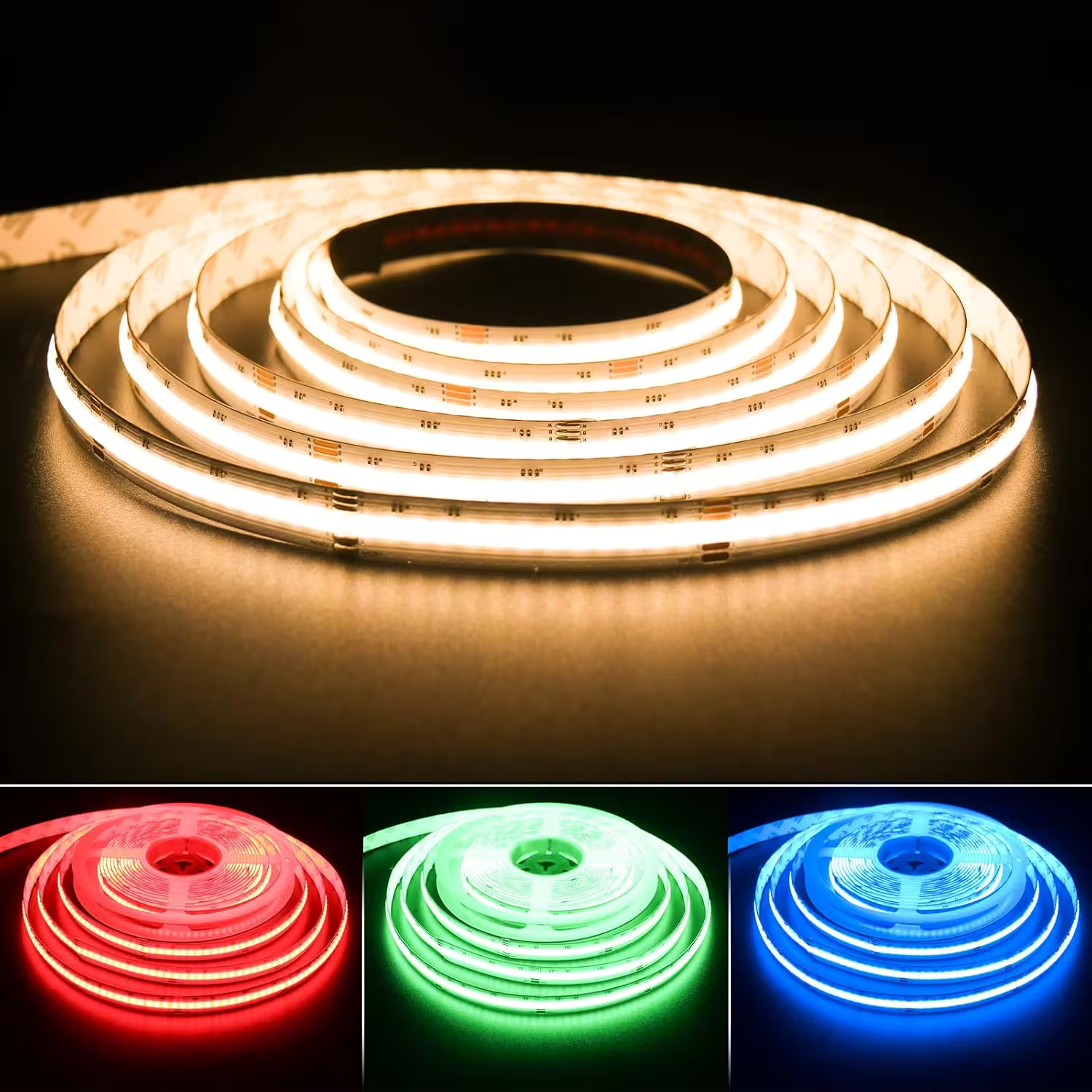
Color Changing RGBW COB LED Strip Light
Main Model: FYH12T784C
LED Chip QTY per Meter: 784
CRI: N/A
PCB Width: 12mm
Color Temperature: RGBW
Input Voltage: DC24V
Power per Meter: 19W
Cuttable Length: 71.42mm
IP Grade: IP20/IP54/IP65/IP67/IP68
Warranty: 3 years
Price: USD $4.10/meter
How Many Lumens Do You Need for Camper Van Lighting?
It’s handy if you’re reading in front of your caravan and want to turn off the light to keep the mosquitoes out. Or if you’re out and about and want to give the impression that someone is in the motorhome. At least with an RGBWW motorhome, colour is not a problem, as you can choose from 16.5 million light colours and every shade of white there is.
There are also different options when it comes to the amount of light. Some LED strips have the LEDs very close together, while others have the LEDs further apart.
The difference is in the uniformity of the light. The lower the number of LEDs per metre, the more you can see the individual light sources – the LEDs – glowing. The more LEDs per metre, the more the LED strip emits per unit of light.
The difference in brightness also affects the amount of light. Light intensity is measured in lumens and can be determined by dimming a lamp. So you also dim a lamp in lumens. How many lumens do you need in your caravan? We explain it to you.
A motorhome is not usually that big, but you will want to have light in several places. A couple of recessed spots in the ceiling, one over the gas hob, one over the table, a night light by the bed and lights in the shower and toilet if you have them. You don’t want to be bathed in light, but you also don’t want too little to be able to work, study or read. In general, 300 to 400 lumens per square metre is enough. A motorhome is not that high either, so the light you use is relatively effective. But it’s different in a very tall house. As you can imagine, the same luminaire in a caravan will give much more light than if it were hanging from a ceiling 3 metres high. All in all, it’s best to work with around 1,500-3,000 lumens for the caravan.

In conclusion, the right 12V camper lights fixture can make all the difference in transforming your camper van into a comfortable and functional space. By carefully considering your lighting needs, choosing the right fixtures, and understanding the ideal lumens, you can create the perfect ambiance for any journey.
At Signlite LED, we bring over a decade of experience in LED lighting design and manufacturing. Whatever your lighting requirements may be, our expert engineering team is here to provide you with the best solutions. Don’t hesitate—reach out to us today and let’s light up your adventure!

